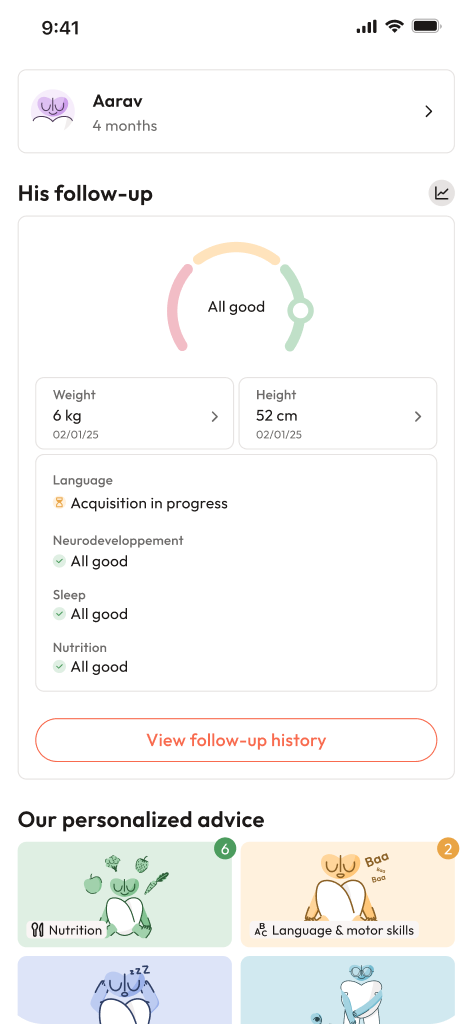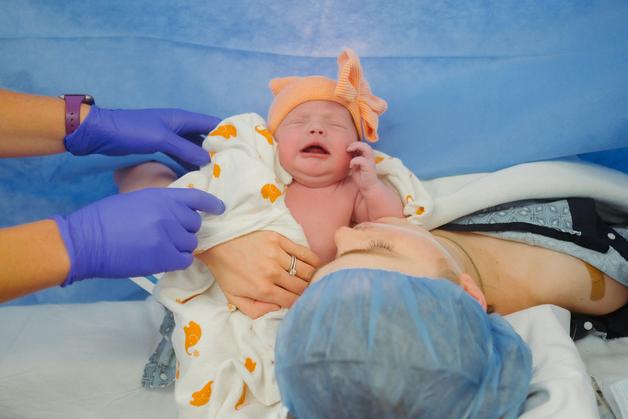The term toxoplasmosis pregnancy alone can make hearts beat faster, a sudden surge of questions bubbling up for many soon-to-be parents. Unseen, almost silent, this tiny parasite manages to slip into daily lives with little warning — through undercooked meat, unwashed vegetables, a handful of soil, or even the purring presence of a beloved pet cat. Wondering how real the danger is? Or if hugs and comfort from your pet could put your baby at risk? Or, perhaps, whether a single lapse in kitchen routines might change everything? These are pressing questions, and the urge for clarity, not confusion, is strong. The challenge: balancing care, science, and everyday routines without adding unnecessary worry to a time that already demands much. Allow the complexities to unfold, one by one, with practical answers and gentle reassurance. From transmission to prevention, from myth-busting to medical facts, and right through to the kind of support that really matters, here’s a complete breakdown of how to face toxoplasmosis pregnancy with confidence.
What Is Toxoplasmosis Pregnancy — And Why Should Expectant Parents Stay Informed?
Toxoplasma gondii — a minuscule parasite, almost invisible, yet potent enough to cross the placenta and affect an unborn baby if infection occurs for the first time during pregnancy. Cats serve as its main hosts, particularly those venturing outdoors, but contamination isn’t about cuddling your furry friend: it’s about contact with oocysts shed in their feces, which then mature in soil, vegetables, or on kitchen surfaces.
But what makes toxoplasmosis pregnancy so significant? The reality lies in its silent impact: while healthy adults might experience nothing more than vague feelings of fatigue, for an unborn baby, the story shifts dramatically. Infection timing determines risk — the earliest stages carry a lower risk of passing to the baby, yet with far more severe potential outcomes; infections later in pregnancy become more likely to reach the fetus but usually with milder or even no symptoms at all.
Scientific evidence points to a diverse range of possible effects: from miscarriage or stillbirth, especially if infection strikes in the first trimester, to later issues such as brain and nervous system damage, eye lesions, or developmental delays. Curiously, many newborns look healthy at birth, yet remain at risk for complications months, even years, later. If toxoplasmosis pregnancy enters your reality, understanding how, when, and why makes a world of difference.
How Does Toxoplasmosis Infection Happen? — Understanding Transmission Pathways
Imagine the daily crossroads: a tempting plate of rare mutton, freshly picked coriander, gardening gloves dusty from weekend rituals. Toxoplasmosis pregnancy commonly follows from:
- Eating undercooked or raw meat (lamb, pork, or venison holding particular risk)
- Consuming unwashed fruits, leafy greens, or herbs so easy to overlook
- Direct contact with cat litter — or soil where neighbourhood or stray cats may have roamed
- Shared kitchen tools, chopping boards, and knives that handled raw meat
- Swallowing untreated or unfiltered water
Less obvious pathways? Living near farmland or managing free-roaming pets adds another layer of exposure. And, while healthy immune systems often brush off the parasite, pregnancy renders both vigilance and awareness far more essential. The ultimate risk? The parasite sidesteps the body’s defences and reaches the fetus across the placenta, especially concerning in the pivotal first months.
The Risks and Possible Consequences of Toxoplasmosis Pregnancy
The paradox of toxoplasmosis pregnancy? Its symptoms can be almost invisible — a shadow of mild fever, prolonged tiredness, painless lumps behind the jaw or neck. Even with no external signs, the parasite may invade. The feared consequences emerge only if the timing is right — or, more precisely, wrong.
Effects on the unborn child vary according to the moment of maternal infection. The earlier it occurs, the more severe the outcome — miscarriage, stillbirth, profound neurological issues (microcephaly, hydrocephalus, intracranial calcifications), or eye damage leading to vision problems (chorioretinitis). Later on, risks of transmission increase but typically come with fewer overt complications.
And what about silent cases? Many babies, seemingly untouched, are born looking perfectly well. Yet the story’s not finished: eye problems or learning difficulties can arise later, long after the pregnancy chapter closes. Regular check-ups, eye exams, and developmental assessments become vital, forming a shield against potential long-term effects.
Screening and Medical Diagnosis: How Does Detection Happen in Toxoplasmosis Pregnancy?
Screening is straightforward yet powerful: a single blood test, early in pregnancy, checking for antibodies (IgG for old infection, IgM for recent). If immune, most concerns fade — but if not, monthly monitoring is recommended, watching attentively for a sudden call to action.
Interpreting these results can seem complicated at first. Low avidity IgG and a surge in IgM indicate a recent infection; sometimes, further confirmation comes with DNA testing (PCR) on amniotic fluid, ideally after 18 weeks, to check if the fetus has been affected. Prenatal ultrasound or MRI can then examine brain, eye, and organ development, seeking the subtlest of warning signs.
Throughout, the support of a care team — obstetricians, paediatricians, infectious disease specialists, and, sometimes, genetic counsellors — steers decisions with sensitivity and up-to-date knowledge.
Everyday Prevention Strategies — Taking Charge at Home and Beyond
Daily routines transform into powerful defences. Toxoplasmosis pregnancy prevention is about decisiveness, not anxiety.
- Always cook meats completely, ensuring juices run clear and temperatures hit at least 67°C (no rare or pink cuts, tempting as they might be)
- Deep freeze meats at minus 12°C for at least three days before cooking, destroying hidden parasites
- Wash raw vegetables, fruits, and herbs with running water, using clean scrubbers or kitchen towels
- Designate separate chopping boards for meats and vegetables, wash hands frequently (especially after handling soil, pets, or gardening gear)
- Delegate cat litter chores when possible; if unavoidable, wear gloves and scrub hands with soap and water immediately after
- Feed cats only cooked or commercial foods, never raw bits, and keep them indoors whenever practical
- Avoid unpasteurized dairy, cheese, and untreated water that can carry further risks
Most importantly, stroking or playing with a healthy indoor cat does not endanger the pregnancy — focus instead on food safety and environmental hygiene.
Recognise the Signs: Symptoms and Diagnosis for Mother and Baby
Toxoplasmosis pregnancy masquerades so easily as a mundane infection; general flu-like discomfort, minor aches, and rarely, swollen lymph nodes. Only seldom, in the context of weakened immunity, do severe symptoms emerge.
The most worrying consequences are found in the early months if maternal infection goes undetected: developmental anomalies, brain and eye injury, or liver and spleen swelling. Yet, up to half of all babies infected show no signs at birth. Therefore, long-term paediatric follow-up is essential, with repeat serological testing, ultrasounds, and sometimes specialist imaging to catch evolving issues.
For clear-cut diagnosis: IgG and IgM assessments, avidity tests for infection timing, PCR on amniotic fluid, and targeted scans as prescribed by your doctor.
Treatment and Care — Managing Toxoplasmosis Pregnancy with Science and Compassion
A diagnosis of toxoplasmosis pregnancy is rarely a catastrophe. Immediate intervention helps tip the odds in favour of mother and child.
- Early diagnosis (before 18 weeks): spiramycin, an antibiotic, concentrates at the placenta, acting as a shield for the baby
- Confirmed fetal infection: A triad of pyrimethamine, sulfadiazine, and folinic acid (after 18 weeks, never before, due to potential side effects); ongoing medical assessments and dedicated support
- After birth: Customised eye exams, brain scans, and regular paediatric checks — treatment often continues for months, lowering risk of late-detected complications
In rare, severe situations, families and doctors might discuss all possible solutions, with full psychological and social support along the way.
Emerging Challenges and Medical Advances
When toxoplasmosis pregnancy involves women on immunosuppressants, with HIV, or autoimmune conditions, the situation changes. Here, dormant infections can suddenly reactivate, or symptoms present in unusual, severe forms.
Scientific research now uncovers fascinating links between long-term infection and possible psychiatric disorders, such as schizophrenia. Medications are evolving, with trials for drugs like clindamycin and atovaquone, plus genetic testing to anticipate prognosis and guide intervention.
For now, spiramycin continues to anchor early maternal prevention, pending further breakthroughs.
Emotional Wellbeing and the Importance of Support
Discovering toxoplasmosis pregnancy can turn expectations upside down. Uncertainty, worries about the future, or feeling lost among complex medical terms is common. Psychological care is not an afterthought — it is integral to good care. Clear explanations, supportive counselling, knowing support groups exist: all these help parents reclaim confidence and autonomy during an emotional journey.
Midwives, doctors, and specialists strive to answer questions patiently, never underestimating the human element alongside science.
Key Takeaways
- Toxoplasmosis pregnancy is manageable with daily awareness, food safety, and proper hand hygiene — especially when the mother is not immune.
- Screening early in pregnancy and maintaining simple hygiene steps drastically reduce risks for mother and baby.
- Infections during the first trimester need closer medical attention; proven treatments and thorough monitoring are available for each stage.
- Many babies affected by toxoplasmosis appear perfectly healthy at birth but need ongoing check-ups to anticipate neurological or eye concerns.
- Parents can trust health professionals to guide them, with deep expertise and empathy for individual family circumstances.
- Comprehensive resources, ongoing research, and peer support offer reassurance at every step.
To access tailored medical advice, free health questionnaires, and up-to-date support for your child, consider downloading the Heloa app — a source of reliable, evidence-based care always at your fingertips.
Questions Parents Ask
Can I keep my cat during pregnancy if I’m worried about toxoplasmosis?
Absolutely — keeping your cat is typically completely safe, even in the context of toxoplasmosis pregnancy. The main area to avoid is contact with litter — either ask someone else to do the cleaning or, if not possible, wear gloves and wash your hands thoroughly immediately after. Feeding your cat only cooked or packaged food, and keeping them indoors, makes risks extremely minimal. Cuddling or playing with your cat does not transmit the parasite. In fact, your furry companion can be a valuable source of comfort during this period.
What should I do if I think I’ve been exposed to toxoplasmosis during pregnancy?
If you feel you’ve come into contact with potential sources (for example, rare meat, unwashed produce, or soil), do not panic. Contact your healthcare provider promptly. They may suggest a blood test to check for exposure, which can reassure you or guide next steps. If infection is confirmed, specific treatments are available and can make a real difference for you and your baby. Acting swiftly and staying informed is the best way forward.
How common is toxoplasmosis in pregnancy, and what are my chances of catching it?
The odds depend on your daily habits — undercooked meats, gardening without gloves, or exposure to untreated water increase risk, but with preventive actions, the overall risk stays low. In most cases, routine hygiene and alertness provide strong protection. If your situation makes you concerned about toxoplasmosis pregnancy, don’t hesitate to seek customised advice from your doctor.
Is it possible for symptoms to appear in the baby years after birth?
Yes, it is possible. Some effects, especially eye issues or developmental challenges, may emerge months or even years after delivery, even if the baby looked entirely healthy at first. Regular medical check-ups and specialist evaluations help catch and address problems as early as possible.
Are there any foods to absolutely avoid during pregnancy regarding toxoplasmosis?
Yes — always cook meats thoroughly (avoiding rare or underdone pieces), wash all raw fruits, vegetables, and herbs under running water, and steer clear of unpasteurised milk or cheese. Practising this, and using dedicated chopping boards for meats, lowers your risk significantly.
Can treatment completely prevent problems for the baby?
Prompt detection and timely treatment greatly lower the chance of serious issues in toxoplasmosis pregnancy, but a small risk can persist, particularly if infection occurred very early. Continuous paediatric follow-up and early interventions are the strongest tools to give your child the healthiest outcome possible.
Further reading:









